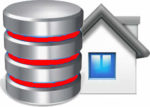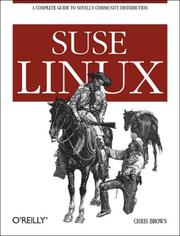Lab-Based Approach Makes Linux Accessible to Users of All Ilks
Perhaps due to the participation of Novell, SUSE Linux is one of
the most popular and highly rated Linux distributions available today. Indeed,
Novell claims over seven thousand installations a day, a breathtaking average of
one every twelve seconds. With SUSE’s quick and easy installation, excellent
hardware detection to get it all going, and first class implementations of both
KDE and Gnome, it’s no wonder.
Chris Brown, author of “SUSE Linux: A Complete Guide To Novell’s Community
Distribution” (O’Reilly) is optimistic about Linux in general and SUSE in
particular, “Three years ago, you couldn’t write a credible sentence containing
the words ‘Linux’, ‘Enterprise,’ and ‘Desktop’. Now you can. Internally, Novell
has moved over entirely to a Linux desktop. Not just the technical people, but
the office managers, HR folks, finance guys, everyone.
“Novell has also recently released SUSE Linux Enterprise Desktop 10 (called SLED
10), which has attracted quite a bit of attention,” Brown continues. “The
quality of the KDE and Gnome desktops has improved enormously. OpenOffice is a
viable alternative to Microsoft Office. It’s all there. With tools like Beagle,
and the sexy, organic XGL/Compiz window manager, the Linux desktop is poised for
head-to-head combat with Windows Vista.”
Brown, whose tutorials can be found in the UK magazine “Linux Format,” hopes his
book is helpful to those moving to SUSE Linux and believes it addresses a gap in
the market. “When I started it, there were no SUSE books in the market at all.
On the other hand, you could barely move in Barnes and Noble without falling
over books on RedHat. I thought it was time to redress the balance a little.”
Brown adds, “I have tried to make this an intensely accessible book: its
lab-based structure focuses on real, practical activities. Each lab is largely
self-contained. No prior knowledge of Linux is needed, though I do assume some
level of computer literacy.”
“SUSE Linux” leads readers deep into the essential operating system components
by presenting them in easy-to-learn modules. From basic installation and
configuration through advanced topics such as administration, security, and
virtualization, this book captures the important details of how SUSE
works–without the fluff that bogs down other books and web sites. Instead,
readers get a concise task-based approach to using SUSE as both a desktop and
server operating system.
In this book, readers will learn how to:
-Install SUSE and perform basic administrative tasks
-Share files with other computers
-Connect to desktops remotely
-Set up a web server
-Set up networking, including Wi-Fi and Bluetooth
-Tighten security on a SUSE system
-Monitor for intrusions
-Manage software and upgrades smoothly
-Run multiple instances of SUSE on a single machine with Xen
Whether they use SUSE Linux from Novell, or the free openSUSE distribution, this
book has something for every level of user. The modular, lab-based approach not only shows readers how–but also explains why–and gives them the answers they need to get up and running with SUSE Linux.

